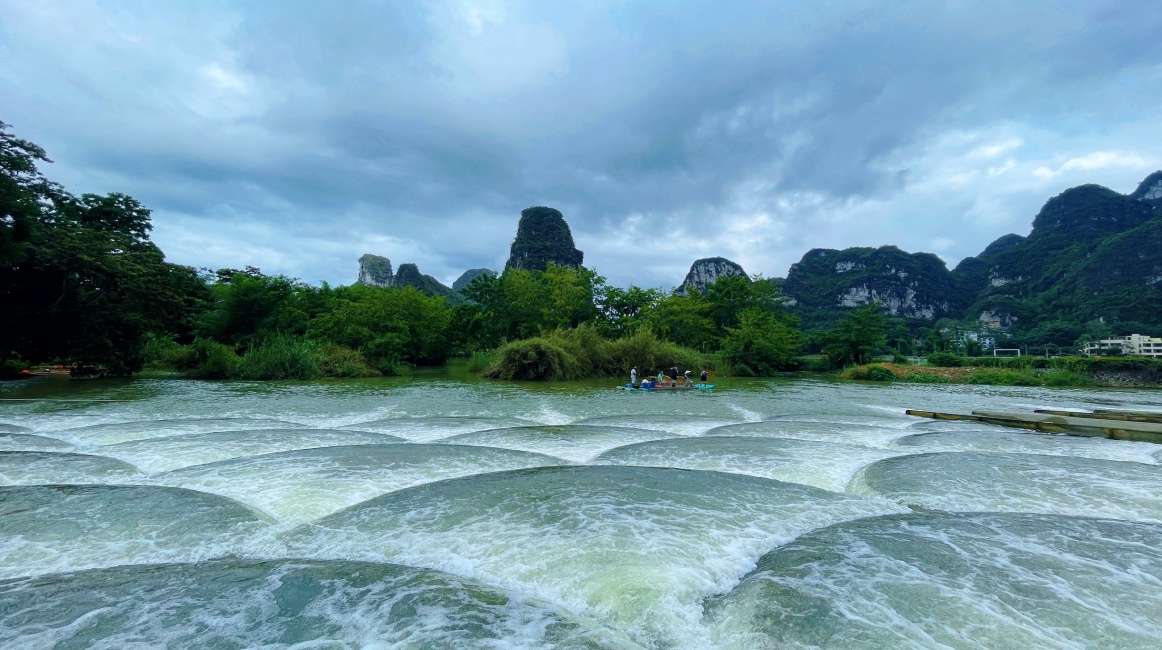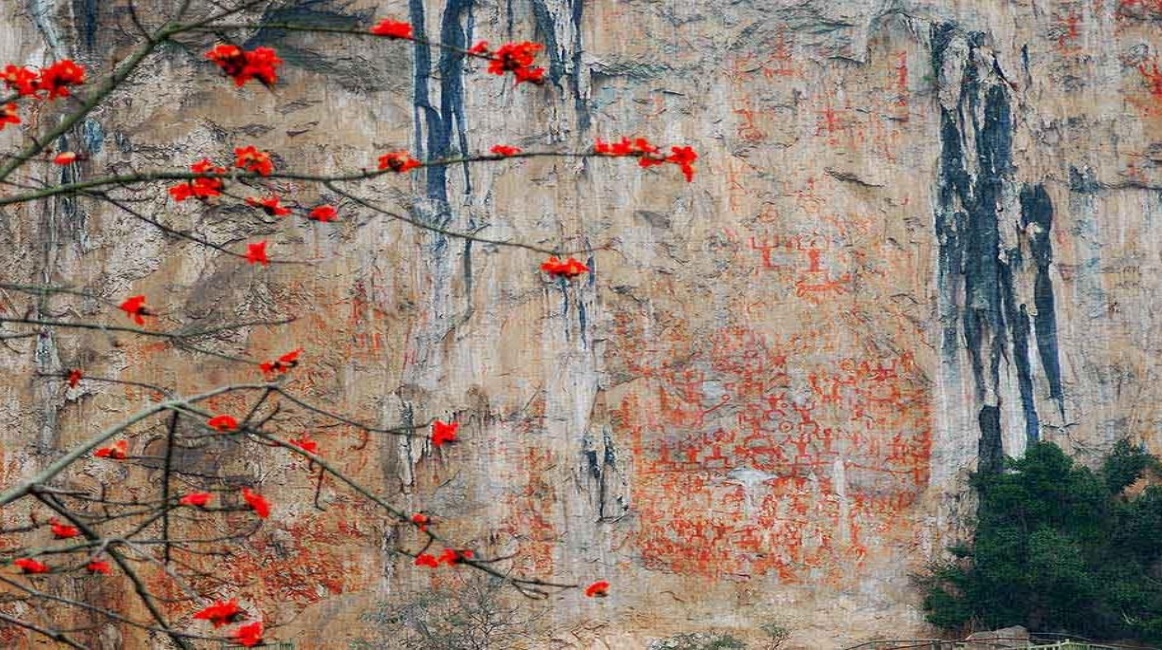Located on the southwestern border of Guangxi, Chongzuo unfolds like a slowly unfurling border scroll, boasting both the majestic beauty of its mountains and rivers and the ancient tranquility of its hidden gems. Here, there are no bustling crowds, only the wonders of nature and the serenity accumulated over time, captivating visitors from the moment they step inside.

The Detian Transnational Waterfall is the crowning touch of this scroll. The Guichun River meanders from Jingxi, plunging over a cliff on the Sino-Vietnamese border, creating a magnificent three-tiered waterfall with a 70-meter drop. The water crashes against the rocks, splashing up a cloud of mist, its roar carrying for miles, like a symphony of nature. When sunlight pierces through the mist, rainbows span the river, connecting the peaks and bamboo forests of both China and Vietnam into a picturesque scene. Approaching the waterfall on a bamboo raft, the cool spray washes over you, and gazing up at the vast expanse of white ribbons hanging in the air, one can truly appreciate the grandeur and awe of "a waterfall plunging three thousand feet." Mingshi Pastoral Area reveals the gentlest essence of Chongzuo. Unlike the solitary cliffs of Guilin, the mountains here are rolling, dark green barriers, shrouded in mist like dancing veils. The Mingshi River flows through them, its surface as calm as a mirror, perfectly reflecting the verdant bamboo groves, rice paddies, and ancient villages on both banks, creating a poetic scene where "boats sail on the water, and people wander in a painting." In late spring and early summer, the rice paddies are lush and green, water buffalo graze leisurely on the banks, and villagers paddle bamboo rafts across the river. The occasional Zhuang folk song adds a touch of life and charm to this tranquil scene.

The Zuojiang Huashan Rock Paintings are a thousand-year-old code carved into the cliff face. As China's first World Heritage Site for rock art, these ochre-red patterns, distributed along the steep cliffs of the Zuojiang River, remain clearly discernible after more than 2,000 years of weathering. In the paintings, the figures of shamans, warriors, and bronze drums are vividly portrayed, their lines bold and unrestrained, seemingly telling the story of the sacrificial rituals and daily life of the ancient Luoyue people. Traveling by boat along the Zuojiang River, gazing up at the mysterious paintings on the cliff faces, one feels as if transported through time, able to touch the pulse of an ancient civilization.

Besides its natural landscapes and cultural heritage, Chongzuo's hidden gems lie deep within the Tongling Grand Canyon. Within the canyon, waterfalls cascade, caves are fantastical, underground rivers meander, and tropical plants flourish. Strolling along the suspended walkways, listening to the murmuring streams, watching ancient vines entwine, and breathing in the fresh air rich in negative ions, one feels as if immersed in a pristine natural oxygen bar. Every drop of water, every green leaf here exudes the vitality and beauty of nature.

The beauty of Chongzuo is a blend of the grandeur of the frontier and the gentle charm of the countryside, a symbiosis of ancient civilization and natural wonders. Like a low-key dancer, it quietly blossoms on the southwestern border of Guangxi, using mountains and rivers as its clothing and history as its adornment, waiting for every explorer to come and unlock the infinite surprises hidden deep within its picturesque landscape.



